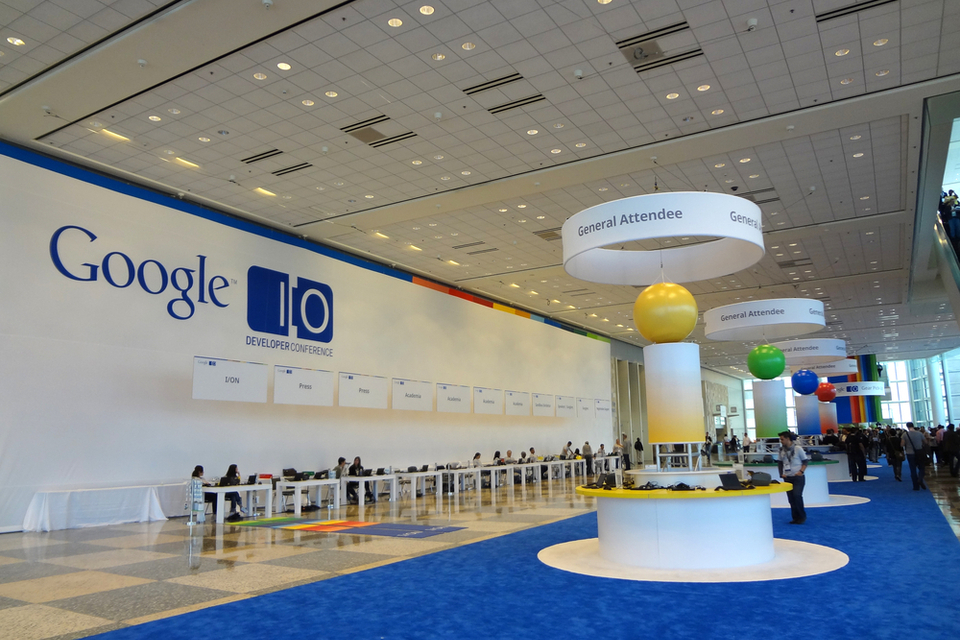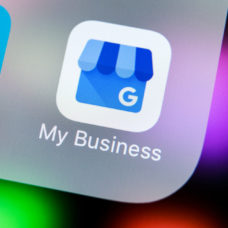I/O 2017 is over, but we’re still reeling. Within a bevy of announcements from Google, the company shared its latest innovative projects and future plans, from Google Assistant and Android to VR and its AI-first strategy.
Google contained a conference-threatening fire at I/O 2017.Click To TweetGoogle didn’t let the fire that broke out–on the conference’s second day–from spoiling its party.
Given how useful and pervasive Google is in our daily lives, it makes sense to keep tabs on where they are taking their technology.
Here’s a Recap of 5 Major Announcements from Google I/O 2017:
1. Google Lens
Still unavailable, Google Lens is an app that combines image recognition, AR, and machine learning to identify objects in the environment and act subsequently. It is not the smart contact lens you see below, but these two technologies could be tied together eventually.
With Lens, smartphones will not just capture objects via the camera. They will immediately understand more about what is in focus.
A smartphone camera, in conjunction with Google Lens, can capture a flower and identify it. It can tell you if a restaurant is worthwhile, displaying pertinent ratings and menus. Pointed at the default password information sticker on a router, the app captures log in info and connects you to Wi-Fi without manual input.
2. Standalone Daydream Headset
During the I/O 2016 conference, announcements from Google included the Daydream VR platform along with a headset that connects to a smartphone. This time, Google showed another design for a headset with a built-in cpu and created a reference model with help from Qualcomm.

In the coming months, HTC and Lenovo will release commercial versions of the headset that, price-wise, would fall in the range of high-end headsets, but without the need for an expensive computer.
3. More Photo Tools
Now counting 500 million users, the Google Photo app now offers new features that simplify sharing. The app will recommend sharing pictures according to the people who are recognized within it. In addition to the photo album production and printing service (Photo Books), users can also have their pictures retouched automatically to remove unwanted elements.
4. Visual Positioning System: Indoor GPS
Based on the Tango 3D visualization technology, Google’s Visual Positioning Service (VPS) is an indoor navigation system that positions the user and objects in their environment with a precision of a few centimeters.
If you’re wondering how this could be useful, imagine looking for a small, indescript item in a large warehouse. This system could accurately locate the product so that you don’t have to do too much searching.
5. Proactive Google Assistant
Google Assistant, the AI that powers Google Home, has been enriched with a new feature and upgraded to be more conversational.
Aside from making outgoing calls, Google Assistant will be more proactive in providing information, rather than just responding to questions. As an example given at the conference, it can warn the user of dense traffic around normal departure times or remind the user of an appointment scheduled on Google Calendar.
Google: A Part of Human Evolution
Many people are worried about job automation and the advent of sophisticated artificial intelligence. Yet, we here at Edgy strongly believe that with each job rendered superfluous by technology, two new, higher-thinking jobs are created in its place. We need only embrace change and learn a few new skills to keep up.
With regards to these announcements from Google and the company’s ever-growing use of AI in its day-to-day products, engaged users will have to do the same. That is, these systems can be used to improve your capabilities.
You can shed certain obligations that an AI can perform and make room for other, more particular tasks.


















Comments (0)
Most Recent